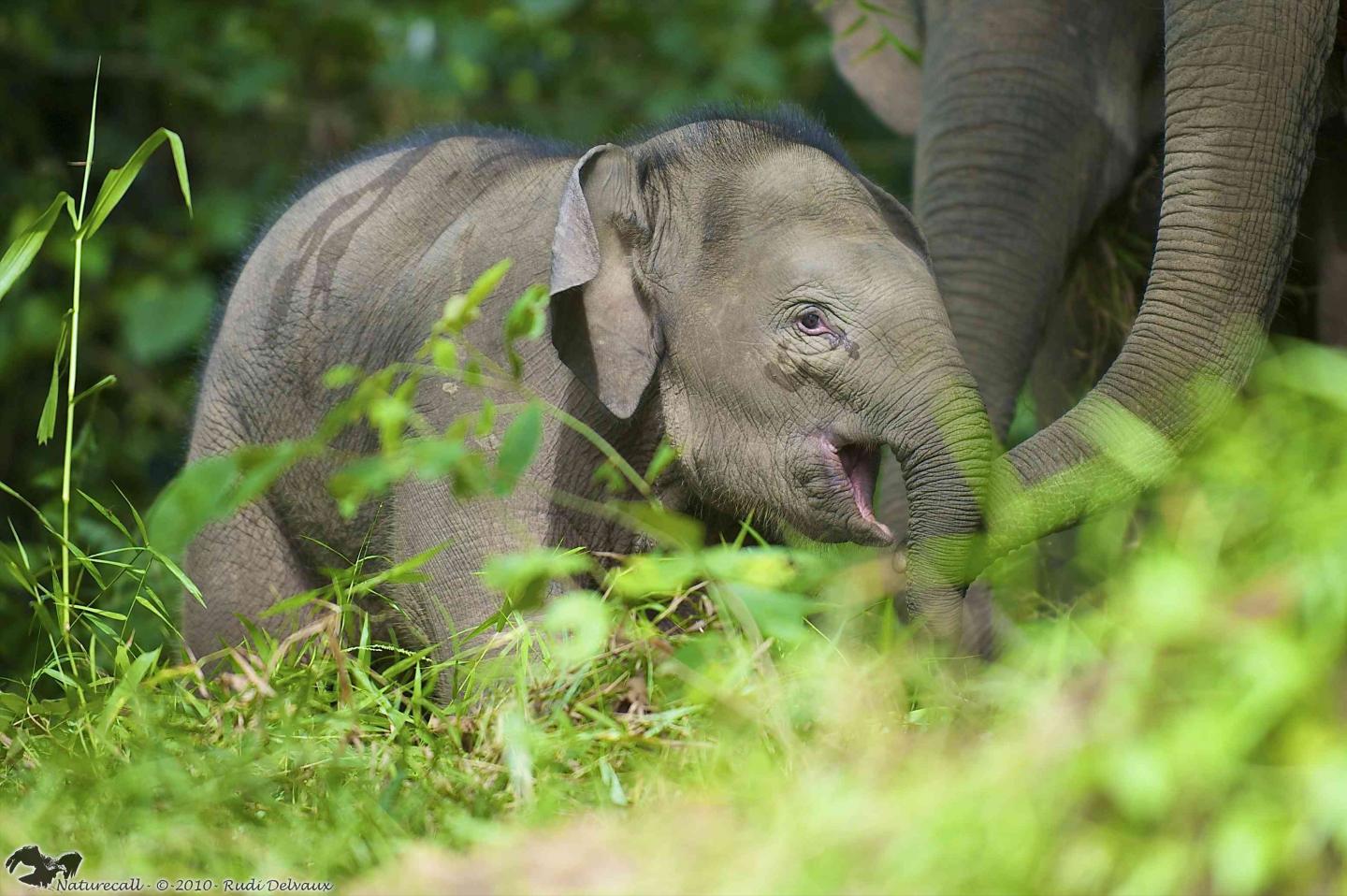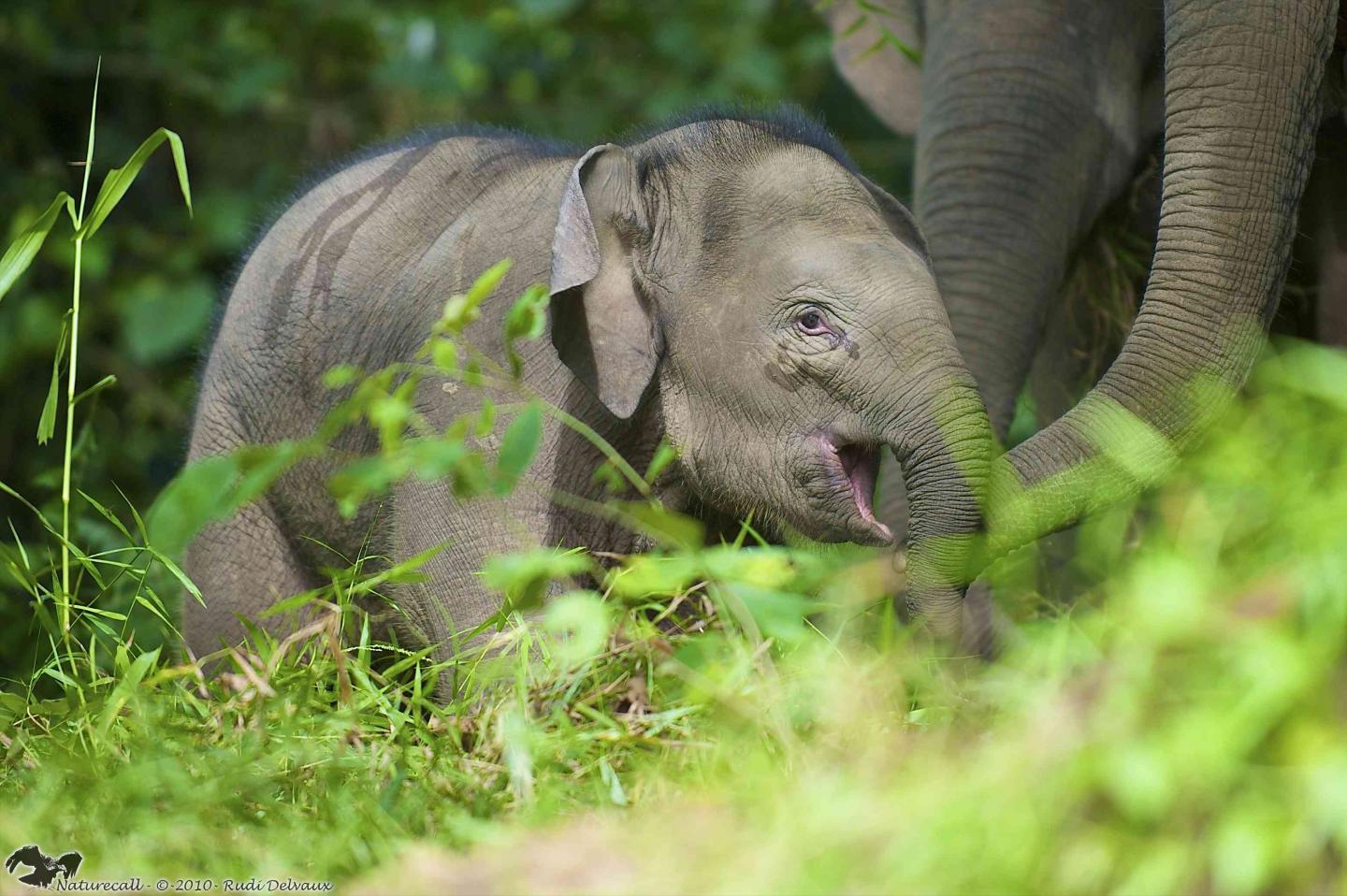
Credit: Rudi Delvaux (http://www.rudidelvaux.com/borneoenglish.html)
How did Borneo get its elephant? This could be just another of Rudyard Kipling's just so stories. The Bornean elephant is a subspecies of Asian Elephants that only exist in a small region of Borneo. Their presence on this southeastern Asian island has been a mystery. Now, in a study published in Scientific Reports*, a research team led by Lounès Chikhi from Instituto Gulbenkian de Ciência (IGC, Portugal) and CNRS, Université Paul Sabatier (France), and Benoit Goossens, from Cardiff University (Wales), and Sabah Wildlife Department (Malaysia), found that elephants might have arrived on Borneo at a time of the last land bridge between the Sunda Islands in Southeast Asia.
Until recently, two opposing theories have been under debate to explain the origin of Bornean elephants: they could have been recently introduced by humans, maybe 300 years ago, or they could have diverged from Asian elephants a long time ago. Indeed, there are historic records reporting that, in the 17th century, neighbour Sultans offered elephants as gifts to the Bornean Sultan. Current elephants would thus be non-native elephants that turned feral. On the other hand, about 15 years ago a genetic study showed that the DNA of Bornean elephants was very different from that of other Asian elephants, suggesting a very ancient separation, on the order of 300,000 years ago. However, no elephant fossils have yet been discovered in Borneo, even though fossils from other large mammals such as orang-utans have been found.
To shed light on the mystery of Bornean elephant's origin, Chikhi and Goossens' team used genetic data analysis and computational modelling to study the past demographic history of these animals. It is very difficult to track ancient demographic history of animals, even more when there are no fossil records to guide the work. "What we did was to create computational models for different scenarios that might have happened. Then, we compared the results from these models with the existing genetic data, and used statistical techniques to identify the scenario that best explained the current genetic diversity of the elephant population in Borneo", explains Lounès Chikhi.
"Our results suggest that the most likely scenario to have occurred is a natural colonization of Borneo around 11,400 to 18,300 years ago. This period corresponds to a time when the sea levels were very low and elephants could migrate between the Sunda Islands, a Southeastern Asia archipelago to which Borneo belongs. We cannot exclude more complex scenarios, but a historical human introduction seems very improbable, and so does a very ancient arrival", adds Reeta Sharma, researcher at the IGC and first co-author of the paper.
With less than 2000 individuals surviving today in an increasingly fragmented environment, and with regular news of poisoned or killed Bornean elephants, the future is grim for this endangered species. "Its very limited geographic distribution and reduced genetic diversity compromise the future of the population. Understanding their origins and past demography will be useful for the development of a long-term conservation strategy, especially at the time we, Sabah Wildlife Department, and partners are drafting a new 10-year State Action Plan for the Bornean elephant", said Goossens. The researcher notes "in the light of the recent killings of elephants in the state for ivory trade and during conflicts, Sabahans must realise that it is their natural patrimony that is targeted, they need to stand for their wildlife and condemn those who kill those magnificent creatures. We should take pride of our wildlife, elephants are part of Sabah's patrimony and we cannot afford losing more animals."
###
This work was conducted by an international team of researchers from Instituto Gulbenkian de Ciência (Portugal), Cardiff University (UK), Danau Girang Field Centre (Malaysia), Sabah Wildlife Department (Malaysia), Laboratoire Evolution et Diversité Biologique (France), CNRS and Université Paul Sabatier (France), University of Copenhagen (Denmark), University of Leicester (UK), and University of Bristol (UK). This study was supported by Fundação para a Ciência e a Tecnologia (FCT, Portugal), Laboratoire d'Excellence (LABEX) TULIP (France), Laboratoire International Associé BEEG-B (France), Darwin Initiative for the Survival of Species (UK), US Fish and Wildlife Service Asian Elephant Conservation Fund, Elephant Family and Columbus Zoo, and by Danish Research Council and Villum Foundation.
* Sharma, R., Goossens, B., Heller, R., Rasteiro, R., Othman, N., Bruford, M.W., Chikhi, L. (2018) Genetic analyses favour and ancient and natural origin of elefants on Borneo. Scientific Reports. DOI: 10.1038/s41598-017-17042-5 http://www.nature.com/articles/s41598-017-17042-5
Media Contact
Ana Mena
[email protected]
351-214-407-959
@IGCiencia
http://www.igc.gulbenkian.pt
Related Journal Article
http://dx.doi.org/10.1038/s41598-017-17042-5





